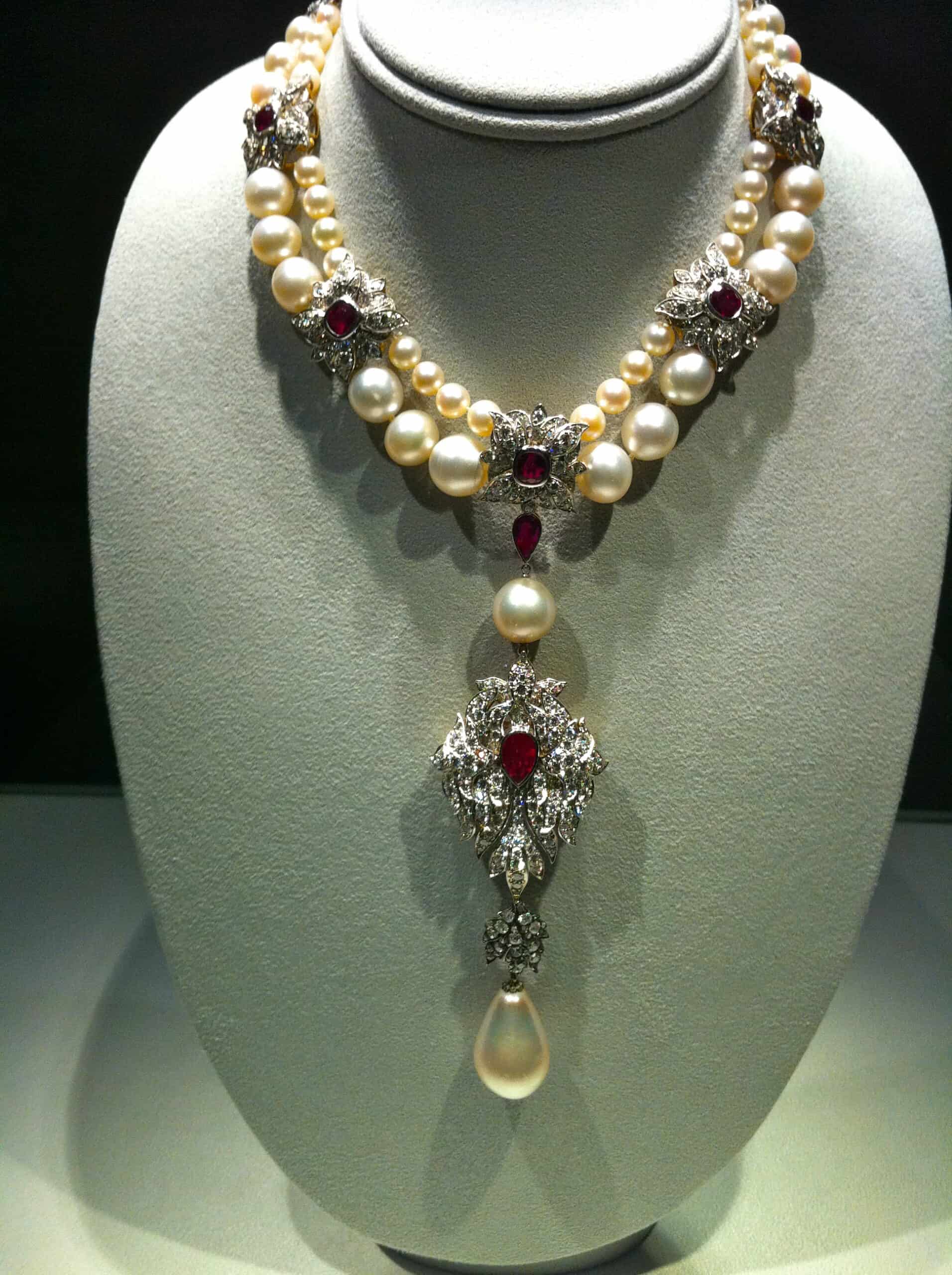Nature never ceases to amaze us with its spectacular displays, and meteorological phenomena are no exception. From dazzling light shows to rare cloud formations, these events are not only stunning but also offer insights into the complex dynamics of our atmosphere. In this list, we explore 14 rarely seen meteorological phenomena that captivate and intrigue both scientists and sky-watchers alike. Each phenomenon has its own unique beauty and story, adding to the wonder of the natural world. Join us as we delve into these extraordinary atmospheric occurrences.
St. Elmo’s Fire
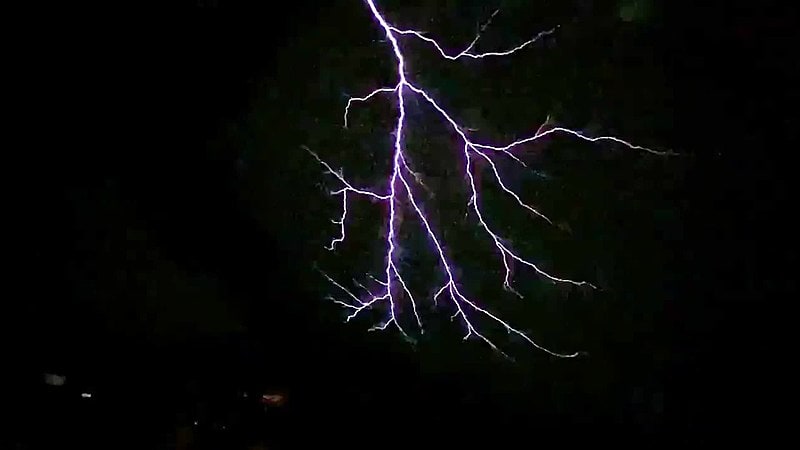
St. Elmo’s Fire is a weather phenomenon involving a bright blue or violet glow, visible in low-light conditions. It occurs when the atmosphere becomes highly charged, usually during thunderstorms, and an electrical discharge is created from pointed objects such as ship masts or airplane wings. This eerie light is named after St. Erasmus of Formia, the patron saint of sailors. The phenomenon has been noted throughout history, often considered a good omen by sailors. Though it resembles fire, it is actually a form of plasma.
Light Pillars
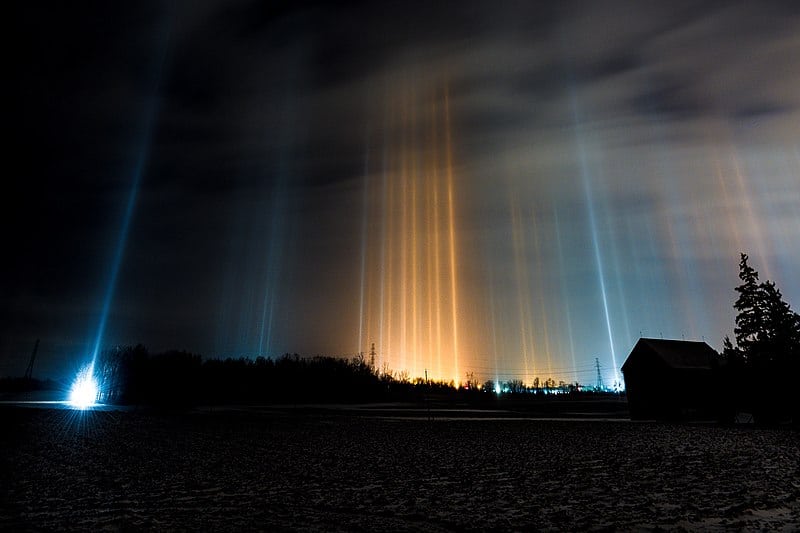
Light pillars are visual phenomena created by the reflection of light from ice crystals with nearly horizontal parallel planar surfaces. This phenomenon is most commonly seen during cold weather when light sources, natural or artificial, reflect off ice crystals suspended in the air. The light appears as a vertical column that extends above and/or below the light source. These pillars can occur with the sun (solar pillars), moon (lunar pillars), or even street lights. Their beauty and rarity make them a sought-after sight for photographers.
Green Flash
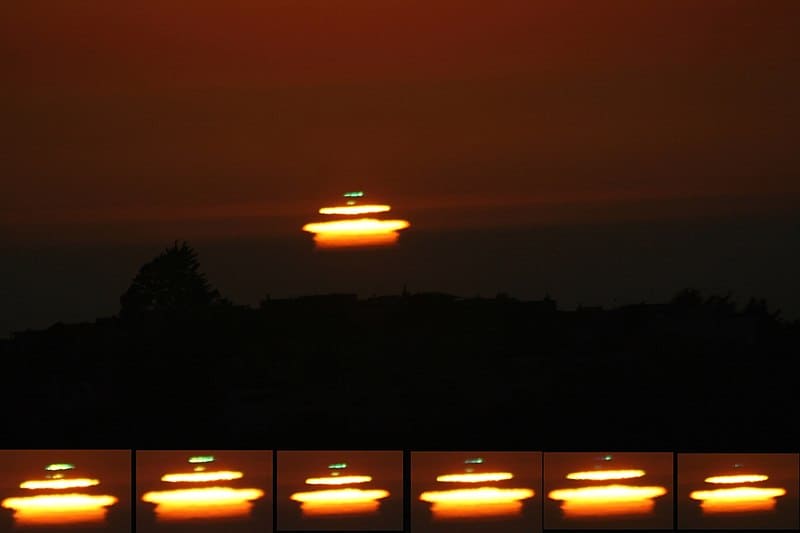
A green flash is an optical phenomenon that occurs shortly after sunset or before sunrise. It results from the refraction of sunlight in the atmosphere, typically seen as a green spot visible for a few seconds. This occurs because the atmosphere acts like a prism, separating light into different colors. While the green flash is fleeting and rare, it can sometimes be accompanied by a green ray extending from the horizon. Conditions must be perfect, with a clear line of sight to the horizon and stable atmospheric layers.
Mammatus Clouds
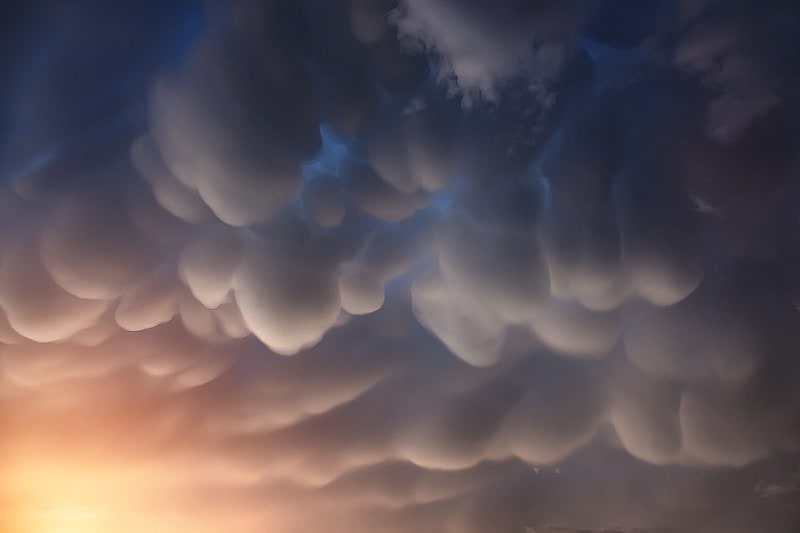
Mammatus clouds are pouch-like structures that hang from the undersides of cloud bases. These clouds are often associated with severe thunderstorms but do not necessarily mean that a tornado will form. They are formed by sinking air, which is the opposite of the typical cloud formation process involving rising air. Mammatus clouds are most commonly composed of ice and are often observed on the trailing anvil of a cumulonimbus cloud. Their striking appearance makes them a favorite subject for photographers and meteorologists.
Fire Rainbows
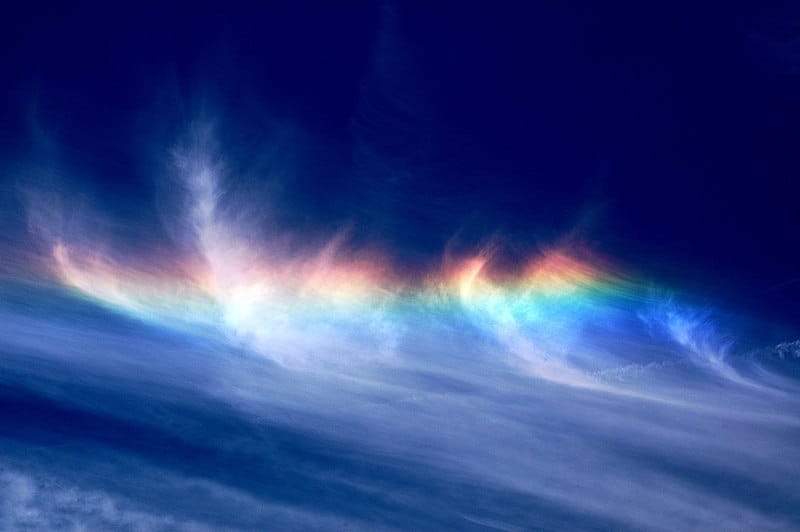
Fire rainbows, or circumhorizontal arcs, are formed by the refraction of sunlight in ice crystals suspended in the atmosphere. Unlike regular rainbows, they appear parallel to the horizon and often display vivid, horizontal bands of color. These phenomena require specific conditions, including the presence of cirrus clouds at high altitudes and sunlight at a particular angle. Despite their name, fire rainbows are neither fire nor rainbows, but their colorful display can be breathtaking. They are more common at mid-latitudes during the summer months.
Noctilucent Clouds
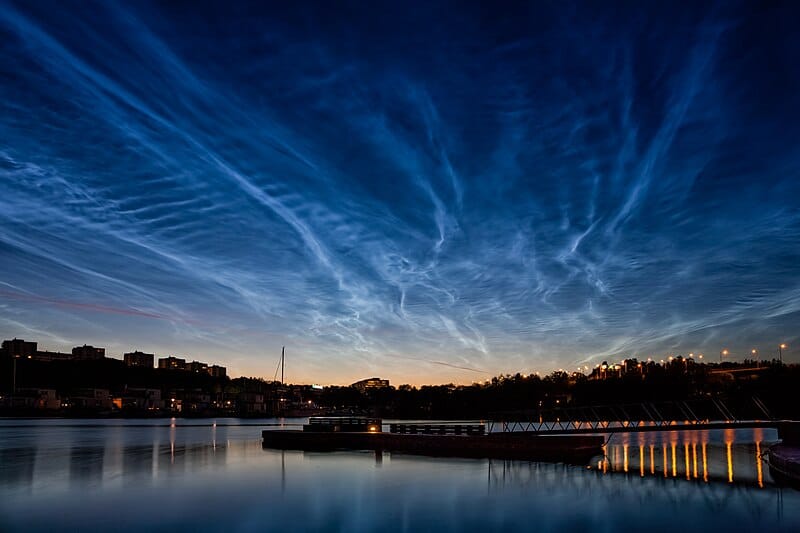
Noctilucent clouds are the highest clouds in the Earth’s atmosphere, located in the mesosphere at altitudes of around 76 to 85 kilometers. They are visible during twilight when the sun is below the horizon but still illuminates these high-altitude clouds. Composed of tiny ice crystals, they are typically seen in the summer months at latitudes between 50° and 70° north and south. Noctilucent clouds appear as eerie, silvery-blue clouds, often described as having a ghostly glow. Their formation is not fully understood, but they are believed to be influenced by atmospheric conditions and possibly linked to climate change.
Fallstreak Hole
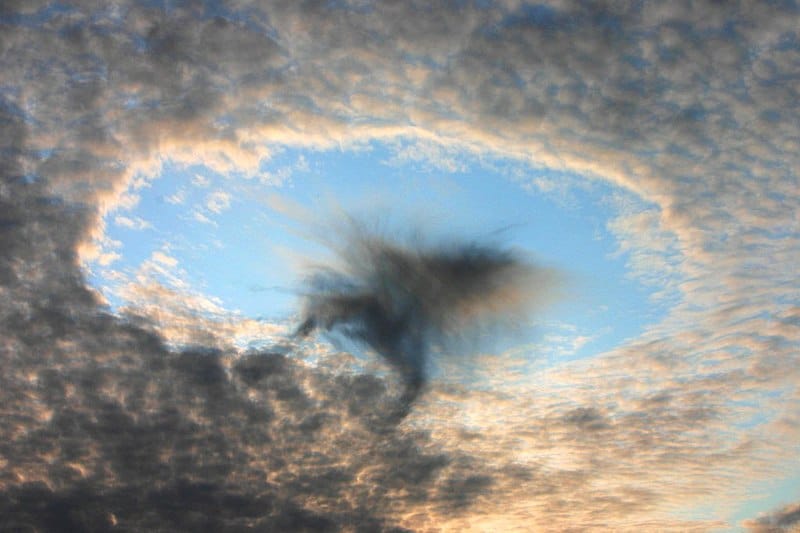
A fallstreak hole, also known as a hole-punch cloud, occurs when supercooled water droplets in a cloud suddenly freeze and fall, creating a large circular or elliptical gap. This process often happens due to the introduction of ice crystals, which can occur from passing aircraft. The phenomenon looks like a giant hole punched through the cloud layer, often with a streak of ice crystals falling from the center. These holes are relatively rare and typically form in altocumulus or cirrocumulus clouds. The sight of a fallstreak hole can be both puzzling and mesmerizing.
Sun Dogs
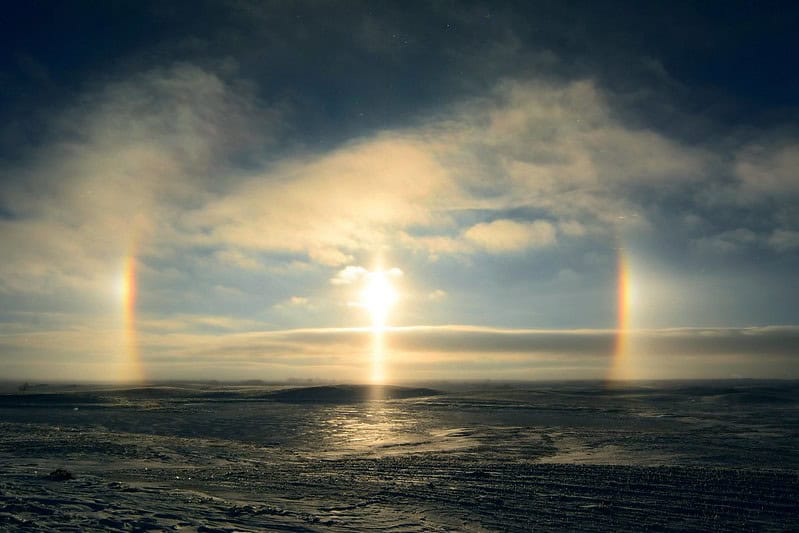
Sun dogs, or parhelia, are bright spots that appear on either side of the sun, caused by the refraction of sunlight by ice crystals in the atmosphere. They are part of a larger halo phenomenon and are typically seen when the sun is low on the horizon. Sun dogs often appear as two glowing spots on either side of the sun, sometimes with a faint rainbow-like color. The term “sun dog” comes from the Greek mythological concept of parhelion, meaning “beside the sun.” These phenomena are most commonly observed during cold weather.
Brocken Spectre
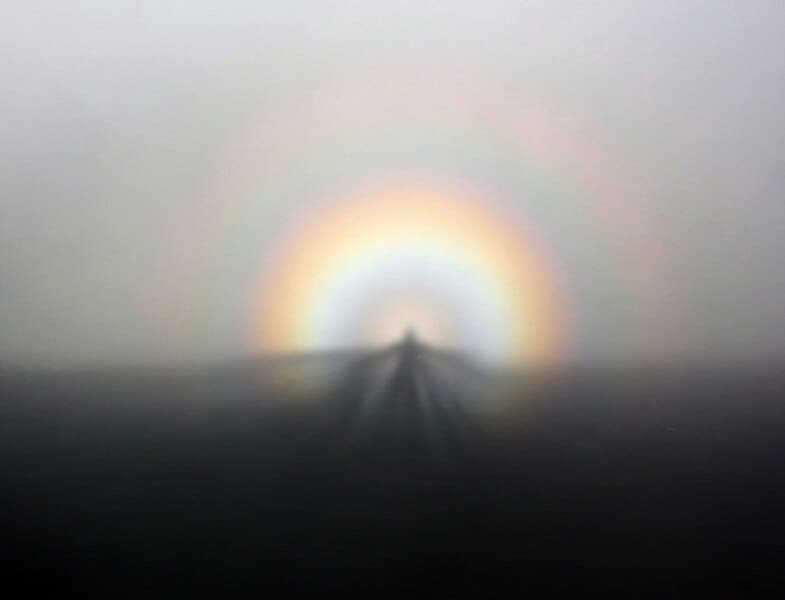
A Brocken spectre occurs when an observer stands on a mountain or high ridge with the sun at their back and looks down into mist or fog. The observer’s shadow is cast onto the mist, often surrounded by a halo-like ring of colored light. This optical phenomenon is named after the Brocken, a peak in the Harz Mountains of Germany, where it was first described. The shadow appears enormous and can sometimes seem to move, giving it a ghostly appearance. This rare and dramatic sight can be startling but is a beautiful natural occurrence.
Halo
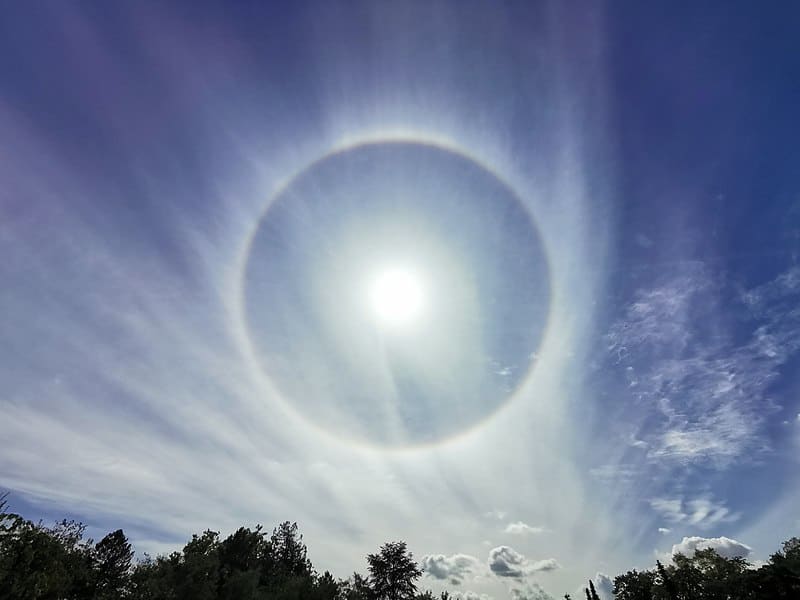
A halo is a ring of light that encircles the sun or moon, caused by the refraction, reflection, and dispersion of light through ice crystals in cirrus or cirrostratus clouds. Halos can appear as bright white rings or display a spectrum of colors, similar to a rainbow. There are various types of halos, including the common 22-degree halo, which forms a circle around the sun or moon at an apparent radius of 22 degrees. These phenomena are more common in cold weather when high-altitude ice clouds are present. Halos have been observed and documented throughout history, often considered omens or portents.
Red Sprites
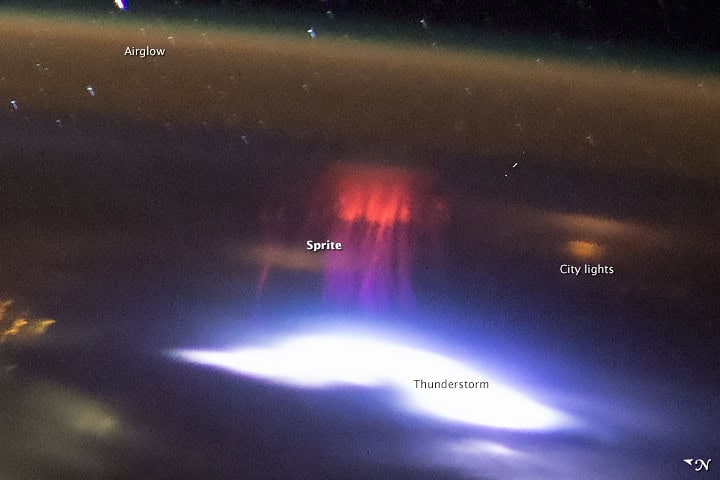
Red sprites are large-scale electrical discharges that occur high above thunderstorm clouds, giving rise to a variety of visual shapes flickering in the night sky. They are triggered by positive lightning strokes from the thundercloud to the ground and can extend as high as the mesosphere. Sprites are usually red at the top and fade to blue at the bottom, often appearing as tendrils or columns. These transient luminous events are rarely seen with the naked eye but have been captured in photographs. The exact mechanisms behind their formation are still a subject of research.
Lenticular Clouds
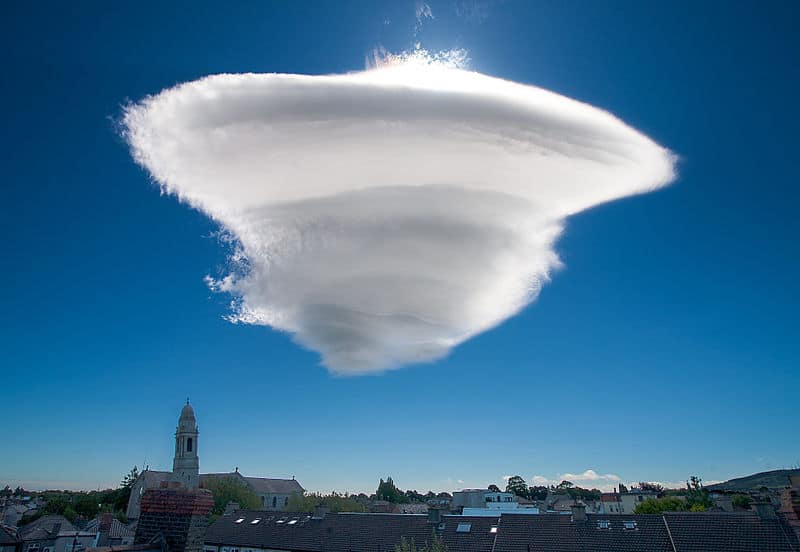
Lenticular clouds are lens-shaped clouds that typically form over mountain ranges or other topographical features. They are often mistaken for UFOs due to their smooth, saucer-like appearance. These clouds form when moist air flows over mountains and cools adiabatically, causing condensation at the crests of the waves. Lenticular clouds can remain stationary even in strong winds, creating a dramatic sight in the sky. Pilots tend to avoid flying near them as they can be associated with strong turbulence.
Fata Morgana
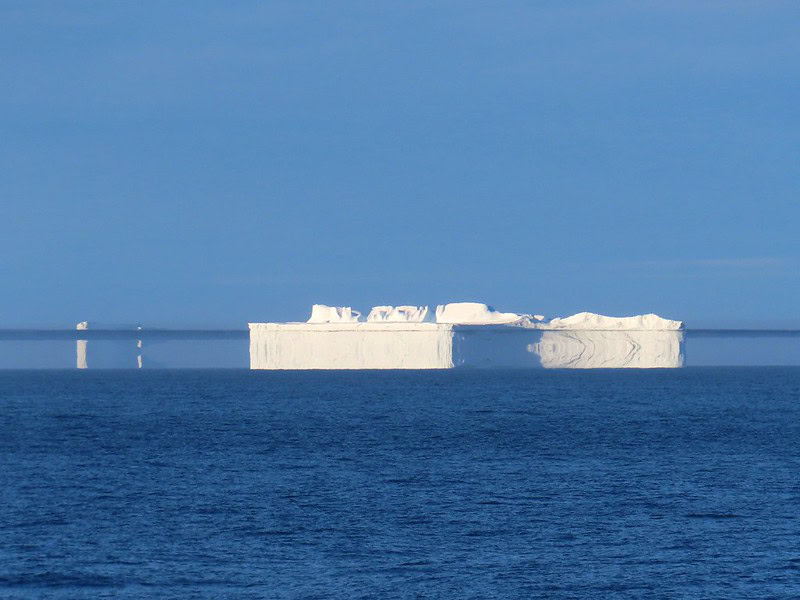
Fata Morgana is a complex form of superior mirage seen in a narrow band right above the horizon. It occurs because of the bending of light rays through air layers of different temperatures, creating stacked and distorted images. This optical illusion can make objects such as ships, islands, or coastlines appear to float in the air, change shape, or stack vertically. The phenomenon is named after the Arthurian sorceress Morgan le Fay, who was believed to use her magic to create mirages. Fata Morgana can be seen over land or sea and has fascinated observers for centuries.
Ice Flowers
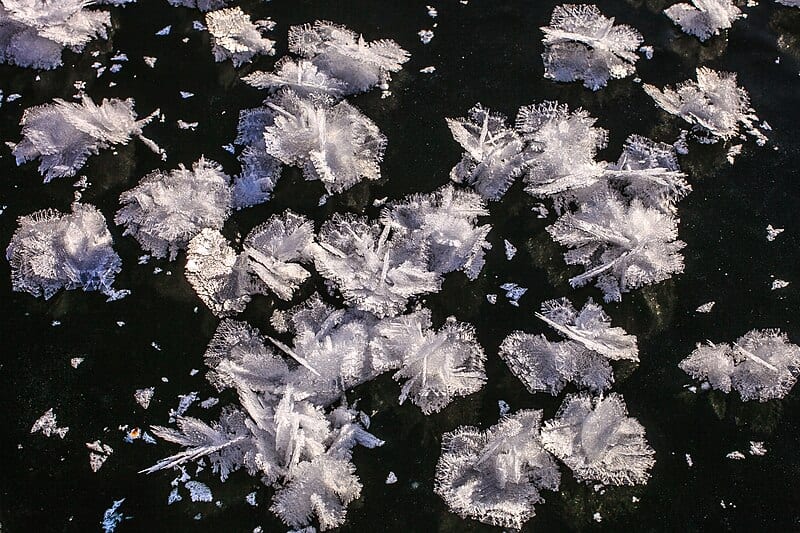
Ice flowers are delicate, frost-like formations that occur when thin layers of ice extrude from plant stems, leaves, or other objects in freezing conditions. The phenomenon typically happens in late autumn or early winter when the ground is not yet frozen, but the air temperature drops below freezing. Water in the plant’s stem expands as it freezes, causing the ice to be pushed out in thin layers, forming intricate, flower-like patterns. These ephemeral ice sculptures are fragile and melt quickly once touched by sunlight. Ice flowers are a rare and fleeting glimpse of nature’s artistry.
This article originally appeared on Rarest.org.
More From Rarest.Org
The 20th century saw dramatic changes and upheavals worldwide. During this period, key political leaders emerged, each leaving a lasting impact on their countries and the world. These leaders shaped global politics, economics, and social structures, influencing the course of history in profound ways. Read more.
The allure of rare and luxurious cars continues to captivate collectors around the world. At auctions, some of the most extraordinary and historically significant vehicles have fetched staggering prices. Read more.
Jewelry is more than just a fashion statement; itâs a reflection of history, culture, and craftsmanship. Some pieces are so rare and exquisite that they fetch astronomical prices at auctions. Read more.



